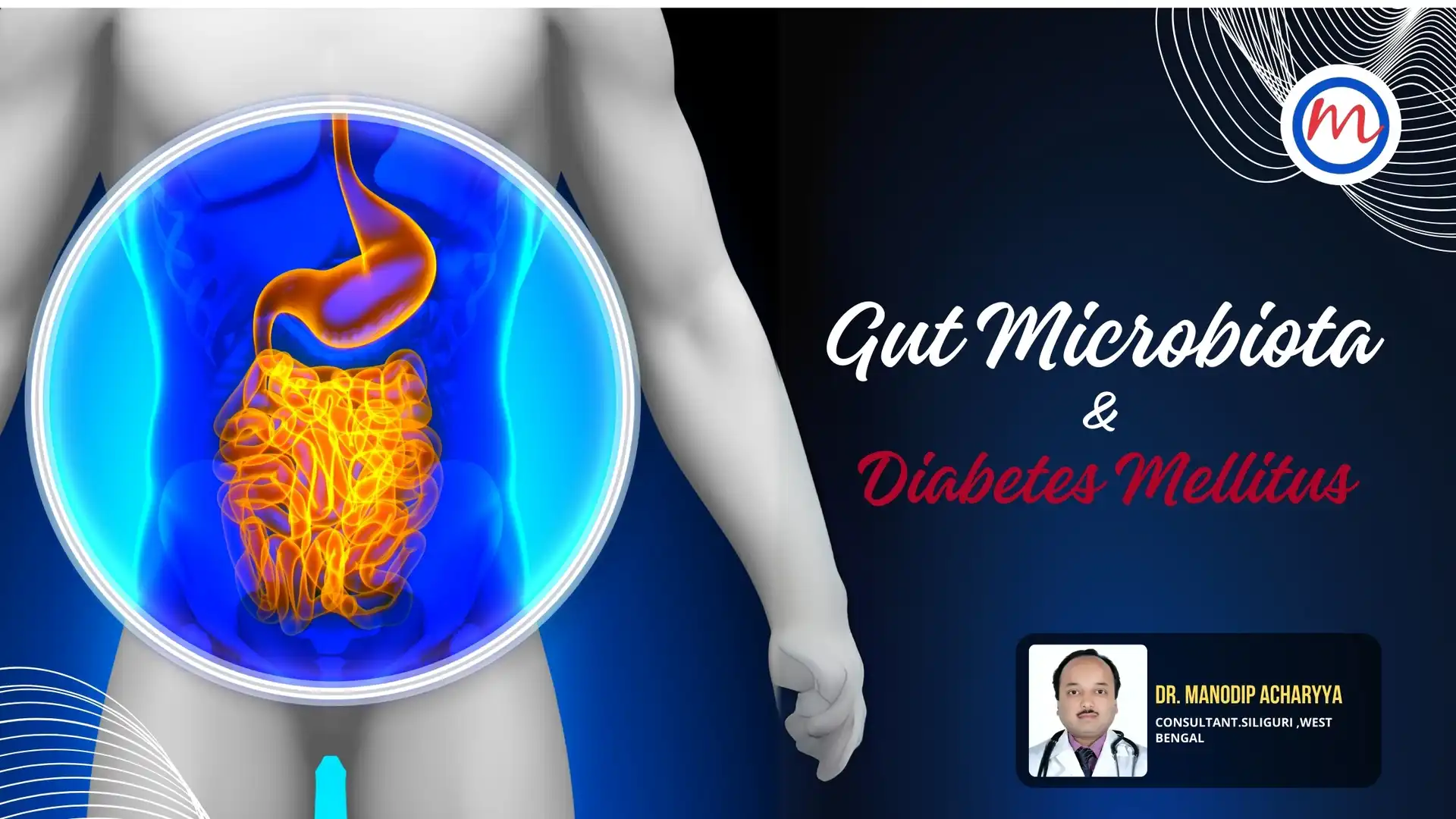Know your diabetes types: What is Fibrocalculous Pancreatic Diabetes?”
Lean adolescents or young adults, with diabetes and a history of recurrent bouts of abdominal pain and oily, smelly stool. That is the textbook description of people with a unique form of diabetes–Fibrocalculous pancreatic diabetes (FCPD)–uncommon diabetes restricted to the tropics.
Before it starts, there’s an early, pre-diabetic phase of the disease, called Tropical Chronic Pancreatitis (TCP), that is treated largely by gastroenterologists. FCPD is the term used for the diabetic state when it is treated by diabetologists. A little-understood disorder, FCPD has been classified by the World Health Organization (WHO) beyond type-1 and type-2 diabetes—as “diabetes due to other types.”
TCP and FCPD have been investigated most extensively by the researchers of the Madras Diabetes Research Foundation (MDRF). Spearheaded by Dr. V. Mohan, scientists and doctors with MDRF have contributed over 100 publications on this topic alone, including medical textbooks. According to their estimates, the prevalence of FCPD is around 0.36 percent in the general population in India.
An elusive disease
The exact reason as to why FCPD develops remains elusive. The hypotheses range from genetics to nutrition to factors that can ignite inflammation in the pancreas (pancreatitis). Although alcohol abuse is usually linked to pancreatitis, FCPD is triggered in absence of alcohol. It is often difficult to control, requiring multiple doses of insulin.
Development of pancreatic cancer is its most dreaded complication of FCPD. “Although the frequency is low, diagnosis of FCPD must be kept in mind during treatment in developing countries,” says Dr. Mohan. “Its management includes management of pain, pancreatic enzyme supplements and periodic surveillance for pancreatic malignancy.”
Disease of the tropics
The first reports of FCPD date back to 1959, when Zuidema P.J., an expert in tropical medicine, published a series of reports from Indonesia, who were poor, protein-energy malnourished and had features of chronic pancreatitis, including pancreatic calcification (stones) in spite of no or minimal intake of alcohol. There is, however, a wide geographical variation in its prevalence. For instance, FCPD cases have been largely concentrated in a handful of tropical countries: Africa, India, Bangladesh, Sri Lanka and Brazil in South America. Again, while it has been reported from Eastern and Southern Africa, it is much less common in tropical West Africa.
Similarly, while most of the cases have been reported from the Indian subcontinent, the areas with the highest prevalence rates are the states of Southern India. FCPD is believed to be higher in states like Kerala, Tamil Nadu and Orissa, compared to the rest of the country. Most of these, however, are clinic-based data. “In the absence of a national study, it is difficult to estimate the prevalence of FCPD in other parts of the country,” points out Dr Mohan
Of scars and stones
In the normal pancreas, there are three types of cells: the acinar cells, which produce digestive enzymes; cells lining the pancreatic ducts, which secrete a watery fluid to carry digestive enzymes into the intestine; and cells in the islets of Langerhans, that create and release important hormones directly into the bloodstream. Two of the main hormones are insulin and glucagon: while insulin acts to lower blood sugar, and glucagon, which acts to raise blood sugar. Between the two, the pancreas regulates the proper blood sugar levels of the body.
TCP starts with the inflammation of the pancreas when the pancreatic enzymes build up and begin to dissolve or digest the organ. It can manifest as acute painful attacks lasting a few days, or it may be a chronic condition that progresses over a period of years. FCPD is associated with Tropical Chronic Pancreatitis (TCP), which leads to scarring of tissues and stone-like calcifications, changing the organ irreversibly.
By the time people with TCP develop diabetes, the pancreas may become as small as the little finger of one’s hand, with a nodular surface. The stone-like calculi (composed mainly of calcium) are found throughout, varying slowly in size from sand-like particles to 2-inch-long nodules. The stones are mainly lodged in the large pancreatic ducts. As the pancreas begins to scar and more than 90 percent of the tissue is destroyed over time.
Care and complications
The most often used clinical criteria for the diagnosis of FCPD has been put forward by Dr. V. Mohan (Mohan V, Mohan R, Susheela L et al. 1985. Tropical pancreatic diabetes in South India: heterogeneity in clinical and biochemical profile. Diabetologia 28:229–232).
People with FCPD develop fatty stools because they do not produce enough digestive enzymes to absorb fat. As they lose insulin-producing cells in the pancreas, too, their condition leads to uncontrolled diabetes. Some of the distinctive features of TCP and FCPD are the presence of large stones in the ducts, a more aggressive course of the disease, and high susceptibility to pancreatic cancer.
TCP in the early stages is characterized by recurrent episodes of severe and difficult-to-treat abdominal pain, which tends to abate by the time diabetes appears. Severe and intractable pain may warrant surgery. While early surgery may prevent the development of diabetes in TCP, surgery does not usually alter established diabetes or improve malabsorption.
It was earlier believed that in the secondary forms of diabetes like vascular FCPD complications of diabetes do not occur. This was disproved by Dr. V. Mohan, studies from Chennai which have shown small vessel diseases in people with FCPD, manifesting as diabetic retinopathy, nephropathy or neuropathy. Large-vessel complications like heart attacks (myocardial infarction), gangrene or other disorders of blood vessels are, however, less common. This might be due to the relative youth, low body mass index and low lipid levels seen in people with FCPD. The most dreaded complication of FCPD is pancreatic cancer.
FCPD is managed with a low-fat diet, apart from fat-soluble vitamins and pancreatic enzyme supplements may help to reduce steatorrhea and improve quality of life. More than 85 percent of people with FCPD need insulin to control diabetes. Frequent self-monitoring of blood glucose is essential to pick up the peaks and troughs.
Changing presentation
There have been some striking changes over the past few decades. The classical clinical presentation of FCPD is seen in lean, malnourished young individuals from poor socioeconomic backgrounds from tropical countries. This seems to be changing now. While most people diagnosed with FCPD have low body mass index, some are of normal weight and a few, obese. Similarly, while most are diagnosed between the ages of 10 and 30 years, onset in childhood or in old age are also being reported.
Studies from the Madras Research Foundation Chennai have shown that not all of the individuals with TCP and FCPD are from poor socioeconomic backgrounds, not all are malnourished and not all require insulin for control of hyperglycaemia at the time of diagnosis. The exact reasons for these changes are not clear, but improvements in socioeconomic status and nutrition are likely to have played a major role.
The road ahead
FCPD continues as an uncommon form of diabetes, confined to tropical Asia, Africa and South America. Even though why it happens still remains unknown, the prognosis of patients has improved, thanks to economic development and better nutrition. In the 1960s, people with TCP used to develop abdominal pain in childhood, diabetes by adolescence and pass away in the prime of life. Now, about 80 per cent of people live much longer.
“While this is a welcome development, it also implies that more and more people with TCP and FCPD will survive long enough to develop the chronic complications of diabetes, to which they are not immune,” says Dr. Mohan. Also, the management of diabetes remains a challenge, in spite of the vast strides made in the treatment of hyperglycaemia over the past few years, he explains: “More needs to be understood on the exact nature of the pancreatic pathology in FCPD, what triggers it and if, and how, the process can be arrested, prior to the development of diabetes.”



